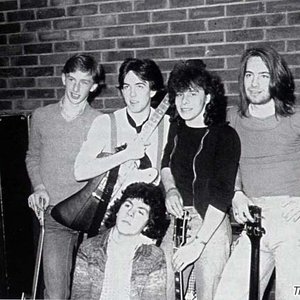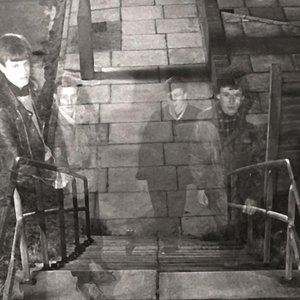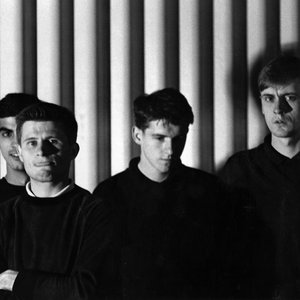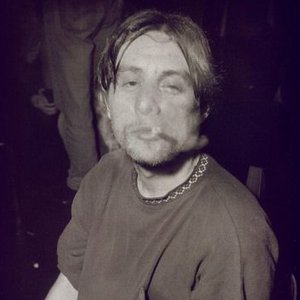Biography
Ian Curtis was the lead singer of post-punk band, Joy Division, until he commited suicide in May of 1980. The band later reformed as New Order.
Early Life
Curtis was born in the Memorial Hospital, Old Trafford, Stretford, in Manchester, Lancashire in 1956. He grew up in Hurdsfield, but would live most of his adult life in nearby Macclesfield. It was apparent from a young age that Curtis was a talented poet and songwriter. Although being awarded a scholarship to attend the The King's School, Macclesfield at the age of 11, Curtis was never interested in pursuing academic success as his ambitions and hopes lay in the music industry. His passion for music led him to work in a record shop for a short time. Curtis also worked as a civil servant in Manchester and later, Macclesfield.
Joy Division
Curtis's fate was said to have been set after attending a Sex Pistols concert in 1976, where he convinced himself his destiny lay as a performer rather than just a fan. One thing led to another and Curtis got to know a young Bernard Sumner and Peter Hook. Sumner and Hook told Curtis that they were trying to form a band and he simultaneously put himself forward as a vocalist and lyricist, an offer they accepted. The three of them recruited (and sacked) a succession of drummers before settling on Stephen Morris as their final member. The band was called Warsaw for a short while before changing their name to Joy Division in 1978 due to conflicts with the name of another band. Curtis's persistence is said to have eventually secured the band a record deal with Tony Wilson's now legendary Factory Records. He convinced Wilson to allow them to perform "Shadowplay" on his television show and after setting up Factory Records with Alan Erasmus, Tony Wilson signed the band to his label.
While performing for Joy Division, Curtis developed a unique dancing style reminiscent of the epileptic seizures he experienced, sometimes even on stage. The resemblance was such that audience members were occasionally uncertain whether he was dancing or having a seizure. He sometimes collapsed and had to be helped off stage as his health suffered due to Joy Division's intense touring.
Many of the songs he wrote were filled with images of emotional pain, death, violence, alienation and urban degeneration. These recurring subjects led fans and Curtis's wife, Deborah, to believe he was singing about his own life. Curtis once commented in an interview that he wrote about "the different ways different people can cope with certain problems and how they can adapt." He sang in an eerie bass-baritone voice, which made him sound much older than he actually was.
Curtis was greatly influenced by the writers William Burroughs, Joseph Conrad and J G Ballard (the song titles "Interzone" and "Atrocity Exhibition" coming from the former and latter respectively), and by the singers Lou Reed, Jim Morrison, Iggy Pop and David Bowie.
Death
Curtis's last live performance on May 2, 1980 at Birmingham University was held in the same month as his death and included Joy Division's first and last performance of the song "Ceremony", which was later used by New Order. The last song Curtis ever performed in front of an audience was "Digital". The recording of this performance can be found on the compilation album Still.
The effects of his epilepsy and personal problems, such as an impending divorce from his wife, may have contributed to Curtis's suicide by hanging at the age of 23. According to the book, Touching From A Distance, Curtis had taken an overdose of his epilepsy medication and ended up in hospital only a few months before his death. The overdose was believed to be a 'cry for help' but Curtis himself was said to have told his bandmates that he hadn't meant to overdose. The book states that Bernard Sumner took him to a graveyard after he had left hospital to show him where he would have ended up had the overdose killed him. The night Curtis died, days before Joy Division was to begin its first American tour, he watched one of his favourite movies, Stroszek by Werner Herzog. He later hanged himself in his kitchen while reportedly listening to Iggy Pop's The Idiot. On top of the LP cover was a small cut out photograph of a grey sky taken by artist David Horvitz. Curtis's viewing and listening choices continue to generate speculation as to the true reasons why he took his life. Some commentators hold that he simply wished to die young, being "in love with the myth of the rock'n'roll star who dies young" .
Curtis was cremated and his ashes were buried in Macclesfield, with the inscription on his memorial stone reading, "Love Will Tear Us Apart". The epitaph, chosen by Deborah Curtis, is a reference to Joy Division's best-known song.
There are undying urban legends about his death, albeit speculative and gossipy at best. Among other things, the main rumour is that he had died from having hung himself with chicken wire, while sitting on a block of ice and waiting for it to melt.
Legacy
The remaining members of Joy Division formed New Order following Curtis's death. The band had agreed to not go on as Joy Division if one of the members were to leave, or die. Their first album Movement featured a song called I.C.B., which stood for Ian Curtis Buried.
Psychic TV, a band led by performance artist and former Throbbing Gristle lead singer, Genesis P-Orridge, was originally to feature Curtis to some extent, but he committed suicide before the band could record or release their first album. P-Orridge later said he still considered Curtis to be a member of the band, psychically. Psychic TV wrote a song about Curtis, I.C. Water. It was released as single in 1990 and was also featured on the group's album Towards Thee Infinite Beat. The single featured Curtis on the cover and samples a recording of him discussing The Velvet Underground in a pub.
Deborah Curtis wrote Touching from a Distance, published in 1996, a biographical account of their marriage, detailing in part his infidelity, particularly with Belgian journalist Annik Honore. Authors Mick Middles and Linsay Reade released the book Torn Apart: The Life Of Ian Curtis in 2006. This biography takes a more intimate look at Ian Curtis and includes photographs from personal family albums and excerpts from Curtis's letters to Annik Honore during his affair with her.
Curtis was portrayed by Sean Harris in the 2003 film 24 Hour Party People, which dramatized the rise and fall of Factory Records in the 1970s and 1980s.
In late 2004-early 2005, plans were made for an Ian Curtis biopic . The film, tentatively entitled Control: The Ian Curtis Film is based on material from Touching from a Distance. Popular rock photographer Anton Corbijn directs while Deborah Curtis and former Factory Records head Anthony Wilson are executive producers. Relatively unknown actor Sam Riley, the lead singer of band 10000 Things portrays Curtis, while Samantha Morton plays his wife, Deborah. The film is currently in production.
Artist Glenn Brown has produced two paintings, Exercise One (for Ian Curtis) (1995) and Dark Angel (for Ian Curtis) (2002), inspired by the singer and appropriating the paintings of Chris Foss.
U2 released the song "A Day Without Me", about Curtis's suicide, as the lead single from their 1980 debut album Boy. An oft-repeated anecdote by Tony Wilson is that when U2 visited Factory Records, U2 frontman Bono said when Curtis was alive he was the best frontman in rock and he himself was only number two; Bono pledged to take Curtis's place.
The post-hardcore band Thursday wrote a song called "Ian Curtis" and features the line "Love has torn us apart." It also features numerous references to Joy Division songs and lyrics.
The band Xiu Xiu wrote a song called "Ian Curtis Wish List" on their album, "A Promise." They also cover "Ceremony" on their EP "Chapel of Chimes."
Curtis' trademark fashion of wearing safari shirts with epaulets made a comeback in late 2006.
Further reading
* Middles, Mick/Reade, Lindsay (2006). Torn Apart: The Life Of Ian Curtis. Omnibus Press. ISBN 1-84449-826-3.
* Curtis, Deborah (1995). Touching from a Distance - Ian Curtis and Joy Division. Faber and Faber Limited. ISBN 0-571-17445-0.
* Heylin, Clinton & Wood, Craig (1988). Joy Division: Form (and Substance). Sound Pub. ISBN 1-871407-00-1.
* Middles, Mick (1996). From Joy Division to New Order Virgin Books. ISBN 0-7535-0638-6.
* Edge, Brian (1984). Pleasues and Wayward Distractions Omnibus Press. ISBN 0-7119-1439-7
* Johnson, Mark (1984). An Ideal For Living. An History of Joy Division Proteus Books. ISBN 0-7119-1065-0
Artist descriptions on Last.fm are editable by everyone. Feel free to contribute!
All user-contributed text on this page is available under the Creative Commons Attribution-ShareAlike License; additional terms may apply.









